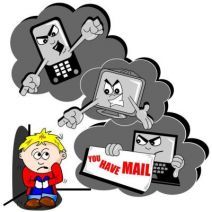 At work, it takes discipline to avoid distractions and stay on task. Thanks to mobile devices notifying you of every update from every friend, distractions at the office are at an all-time high. By scheduling the times to check your messages, you can stay connected, lessen distractions, and maximize productivity.
At work, it takes discipline to avoid distractions and stay on task. Thanks to mobile devices notifying you of every update from every friend, distractions at the office are at an all-time high. By scheduling the times to check your messages, you can stay connected, lessen distractions, and maximize productivity.
This principle applies to all digital communications, but we are going to focus on e-mail as our primary example. Having your e-mail inbox open and alerting you to new messages while you are trying to accomplish work is distracting. Even though the incoming messages may be more interesting than your task at hand, constantly checking and replying to your e-mails will prolong the amount of time it takes you to complete a project.
If you are trying out scheduled e-mail communication for the first time, then we recommend checking your inbox twice in one workday. Pick two times that work best for you, preferably once before and after lunch, like 10am and 3pm. If you are successful with this model, then you can increase your productivity even more by checking it only once per day. Sticking with this new schedule will require a fair amount of self-control, consider this a fair warning for all you tech addicts out there.
Because this will be a drastic change to the way that you communicate, you will want to inform your coworkers about your new goal–they can even help you stick to it! You will especially want to let your boss know about your intentions. Your boss might even like the initiative and be happy that you are putting a priority on getting your work done.
To make scheduled e-mail communication go smoother, you can take advantage of the autoresponder tool provided by your e-mail service. You can use this to automatically reply to every new message with a preset message. You can make it say something to the effect of, “As a productivity measure, I only check my e-mail twice per workday (10am and 3pm). You can reach me at my cell if you need to get a hold of me sooner than these scheduled times.”
Social media and other digital communications like texting can be just as distracting as e-mail. You can apply this scheduled communication structure to these medias as well. With social media, you won’t have the handy autoresponder to help you out; but seriously, how many of your Facebook notifications are important enough that you need to stop important work and instantly read it?
Scheduled communication can be a huge boost to your productivity and help take the distractions out of your workday. Give this communication method a try and let us know in the comments how it goes!
Source: vp 400

